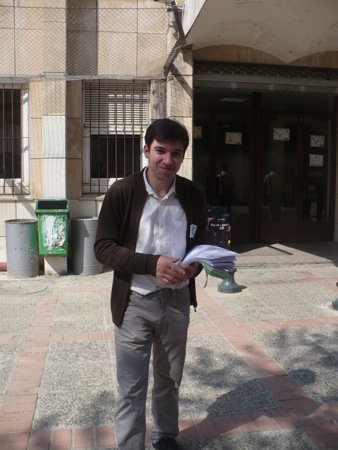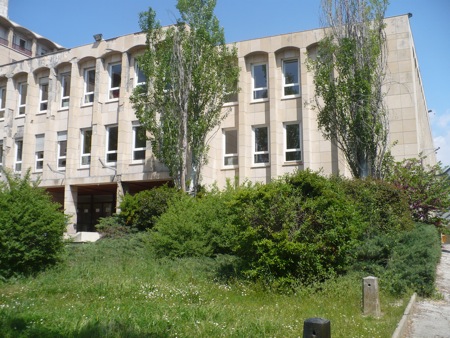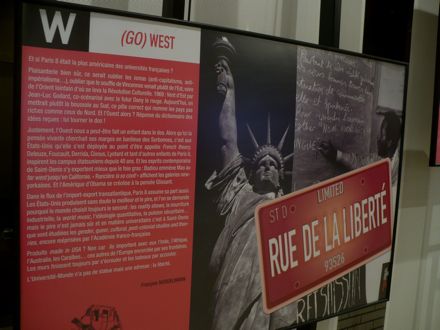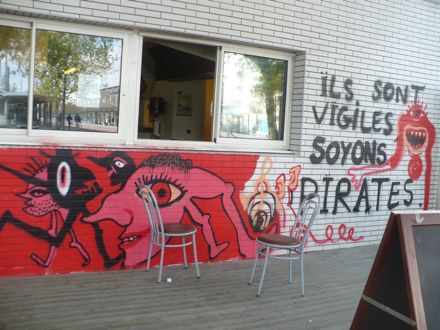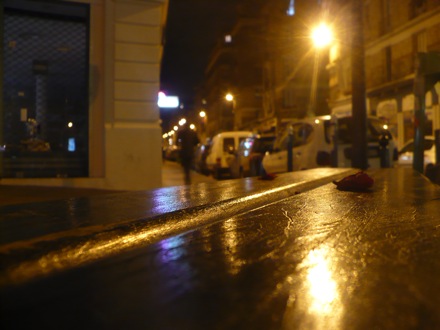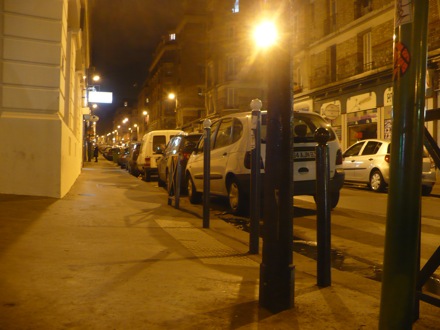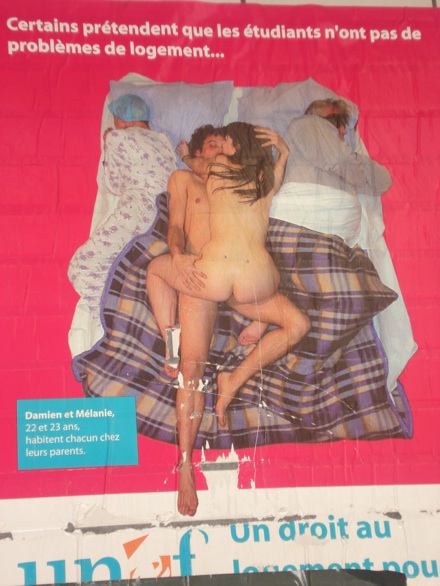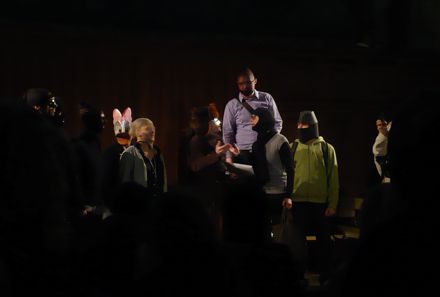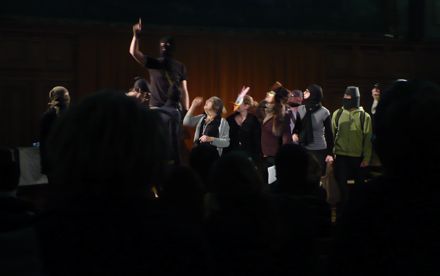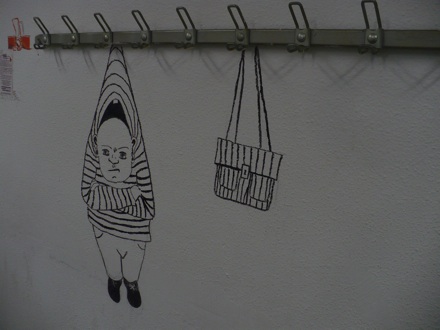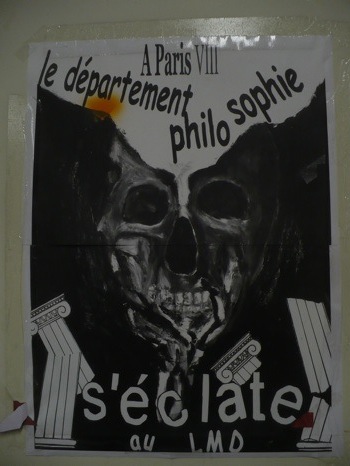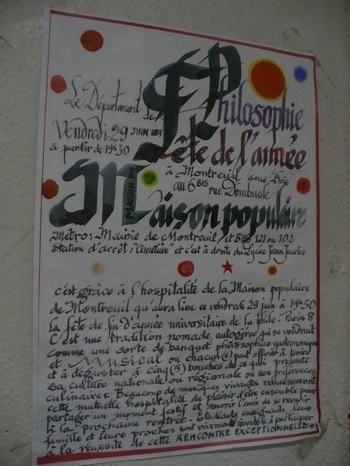Yesterday was the big day of student elections at Paris-8, just as there were elections in Aix that I covered a few weeks ago. But in the thick of the afternoon I was delighted to see that not all the groups were handing out election fliers, for right at the campus entrance was a new feminist collective. Such groups seem somewhat less common in France than in the US, where gender-based activism, while far from mainstream, is quite usual. And their flier, when I sat down later to look at it, turned out to be a good one:
Questionnaire on Sexuality
- Where do you think your heterosexuality comes from?
- When and under what circumstances did you decide to be heterosexual?
- Could it be that your heterosexuality is only a difficult and troubling phase that you’re passing through?
- Could it be that you are heterosexual because you are afraid of people of the same sex?
- If you’ve never slept with a partner of the same sex, how do you know you wouldn’t prefer one? Could it be that you’re just missing out on a good homosexual experience?
- Have you come out as heterosexual? How did they react?
- Heterosexuality doesn’t cause problems as long as you don’t advertise these feelings. Why do you always talk about heterosexuality? Why center everything around it? Why do the heterosexuals always make a spectacle of their sexuality? Why can’t they live without exhibiting themselves in public?
- The vast majority of sexual violence against children is due to heterosexuals. Do you believe that your child is safe in the presence of a heterosexual? In a class with a heterosexual teacher in particular?
- More than half of heterosexual couples who are getting married this year will get divorced within three years. Why are heterosexual relationships so often bound for failure?
- In the face of the unhappy lives that heterosexuals lead, can you wish for your child to be heterosexual? Have you considered sending your child to a psychologist if he or she has turned out to have heterosexual tendencies? Would you be ready to have a doctor intervene? Would you send your child to in-patient therapy to get him or her to change?
Continue reading “Heterosexuality, the opiate of the people”
